
Látrabjarg in Iceland - Everything You Need to Know
For many, a visit to Látrabjarg is the highlight of a trip to the Westfjords. As the country's most significant bird cliffs, Látrabjarg is a haven for a diverse array of seabirds. In fact, it's not only the largest seabird cliff in the country; it also holds that honour when you consider the rest of Europe. Látrabjarg is truly an extraordinary location that deserves a spot on any traveller's must-see list.
How do the cliffs stack up?
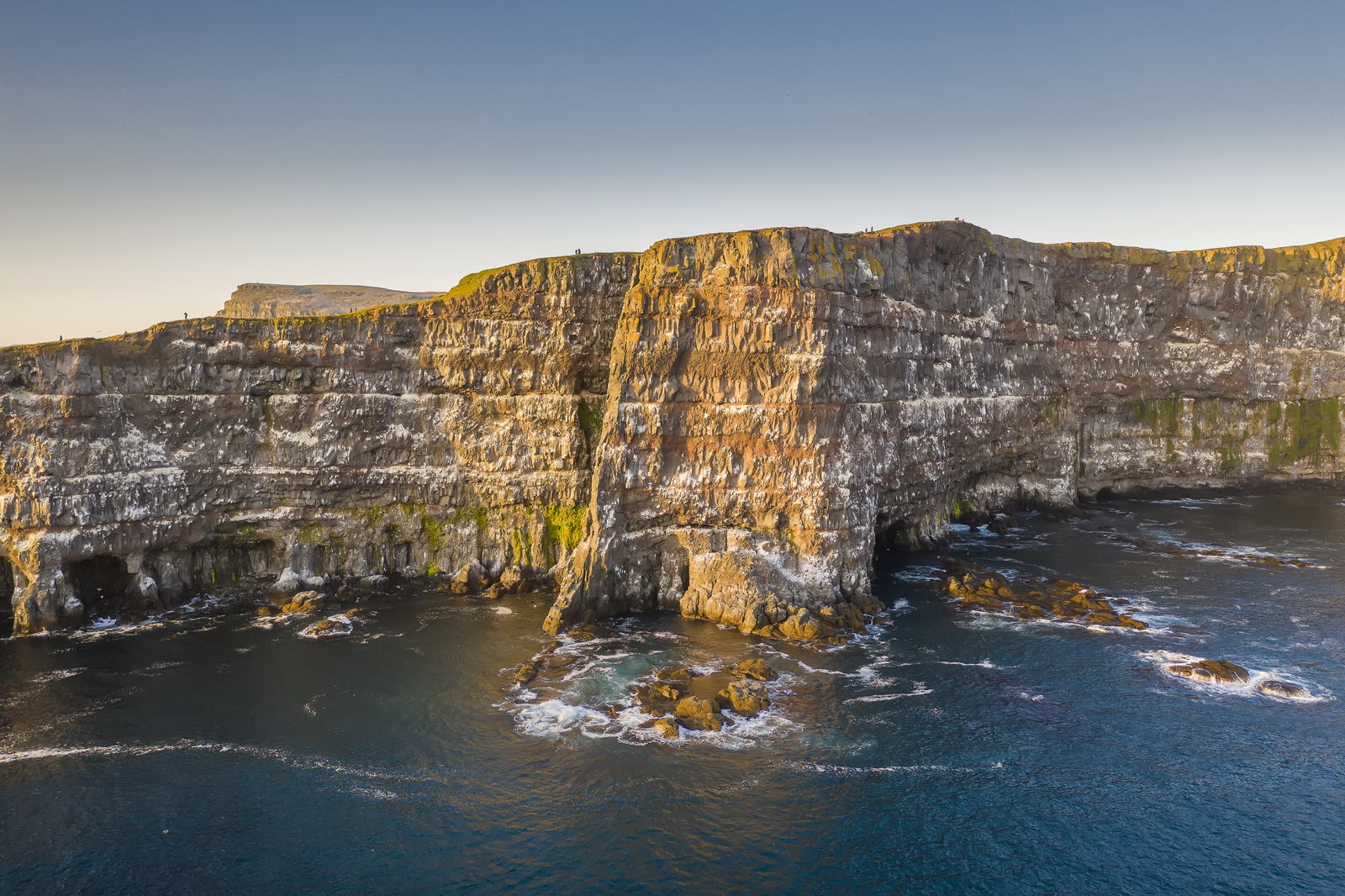
The Látrabjarg Cliffs are a natural wonder, boasting impressive dimensions spanning 14 kilometres (8.7 miles) of coastline and reaching heights exceeding 400 meters (1,312 feet). This grand scale creates a striking landscape and provides a thriving habitat for a diverse array of seabirds.
Though many come to view the cliffs' most famous inhabitant – the puffin – they're in for a treat, as millions of seabirds make their home here. You'll spot razorbills, fulmars, guillemots, gannets and more. The cliffs serve as a crucial nesting ground where these birds breed and raise their chicks during the nesting season.
Puffins at Látrabjarg
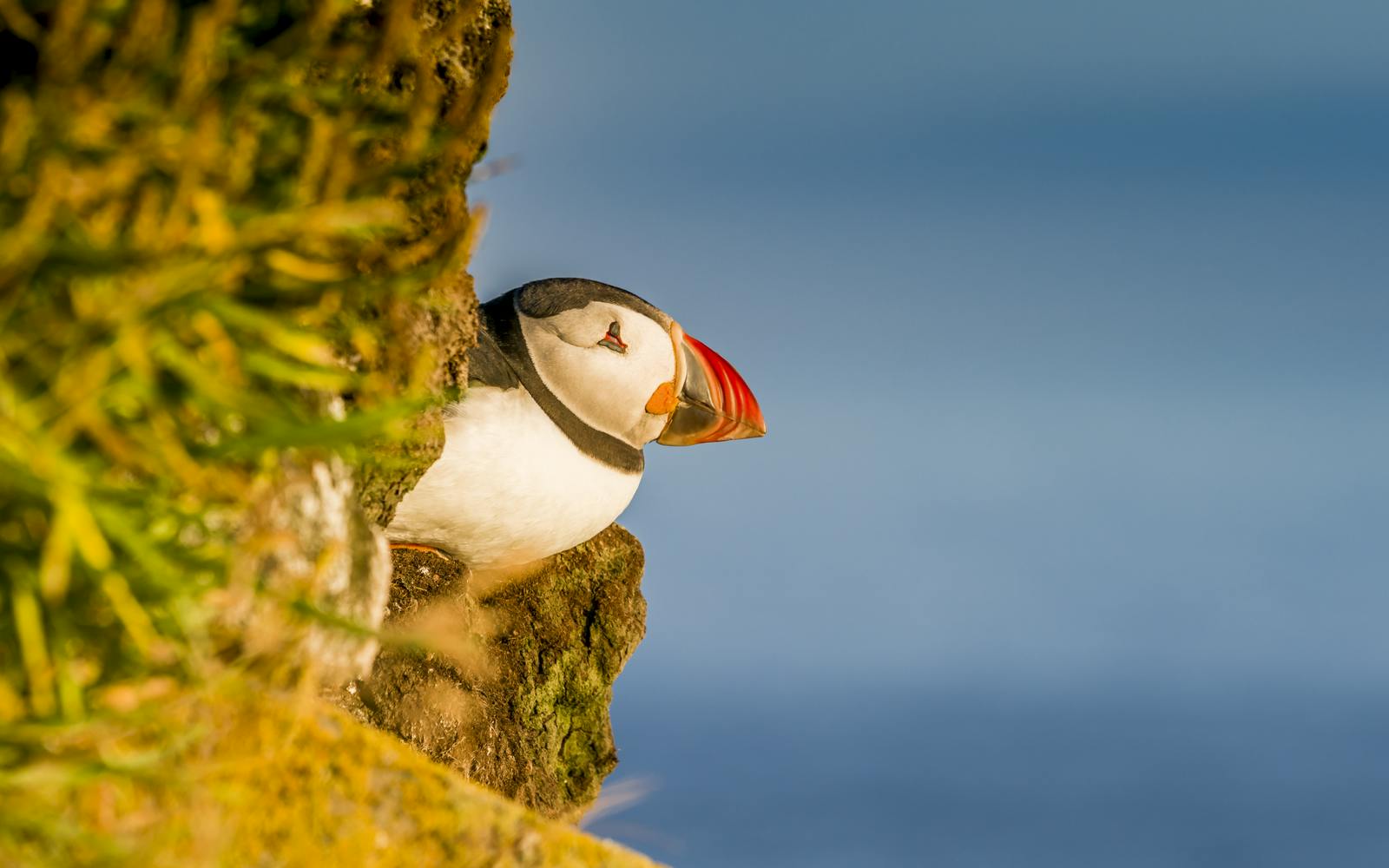
With those attention-grabbing colourful beaks, though the beaks fade after the breeding season, puffins are instantly recognisable even if you know little about birds. Puffins are undoubtedly the star attraction at Látrabjarg.
These birds are known for their tameness, often allowing visitors to approach them closely without showing signs of distress. This unique opportunity for close encounters with puffins is a major draw for wildlife enthusiasts and photographers alike.
IMPORTANT! Respect the birds!
As it is not uncommon for puffins to approach humans, but if they do, don't be tempted to stroke them. Near their tail feathers, they have a gland that enables them to excrete oil, helping to waterproof them while swimming. It is crucial that the oil is not wiped off, even by accident. Another thing to remember is that you aren't permitted to touch the eggs – it's against the law, and rightly so.
Know Your Cliffs
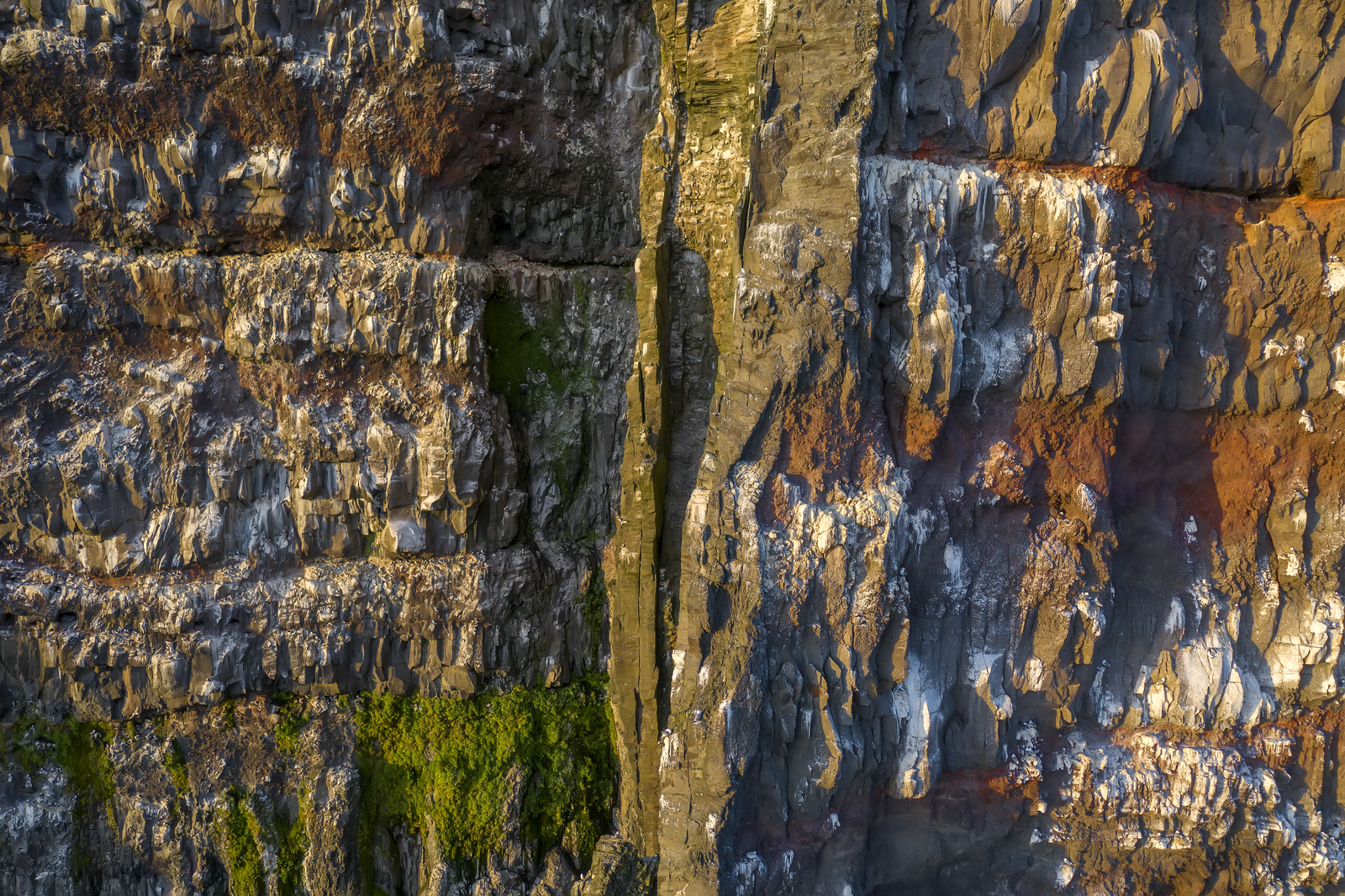
The Látrabjarg Cliffs are actually a collection of four distinct cliff sections: Látrabjarg, Keflavíkurbjarg, Bæjarbjarg, and Breiðavíkurbjarg All are vertiginously steep, a sheer drop to the rocky shore and wild ocean below. Care is essential.
It can be tempting to venture close to the edge to peer over at the puffins on their grassy perches. But the edges aren't stable, and it's not uncommon for the loose and fragile ground to give way. Stand at a safe distance to avoid being a casualty.
Take a hike
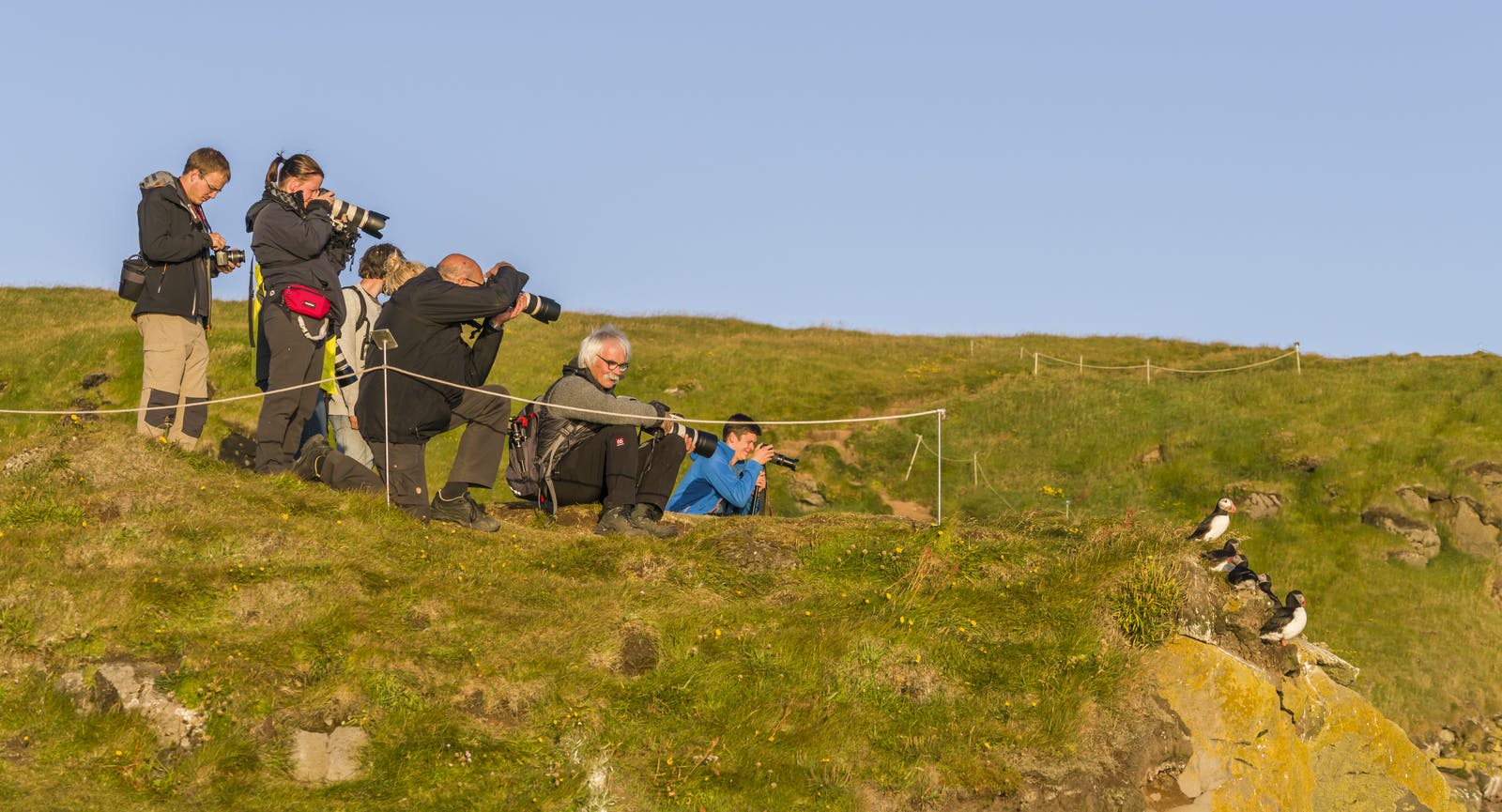
The cliff tops at Látrabjarg provide an excellent opportunity for hiking enthusiasts to experience the breathtaking landscape. To ensure safety, hikers should remain behind the white lines (or maintain a safe distance from the edge later in the season when the lines may have faded).
Enjoy the refreshing sea breeze and a view of the iconic Látrabjarg lighthouse. The best time to come – for a chance of half-decent weather and to see the birds – is between May and late August.
Combo tours
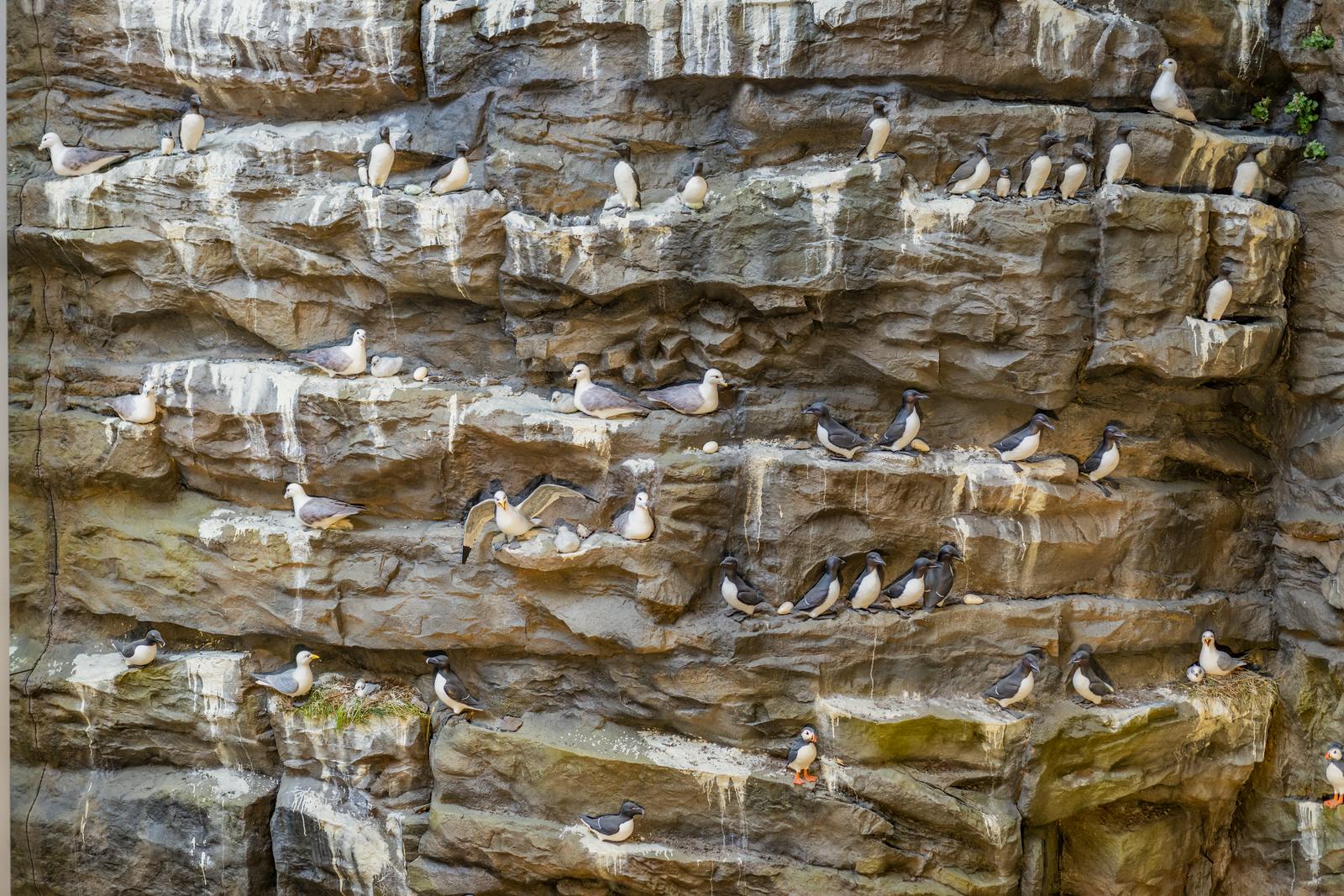
During the peak season, numerous tour operators offer guided experiences of the Látrabjarg Cliffs and surrounding attractions. Companies like Westfjords Adventures, based in Patreksfjördur, provide a variety of tour options for visitors to choose from.
One popular combo tour includes a visit to the Hnjótur museum, which offers insight into Iceland's maritime history and chronicles the daring rescues of sailors from ships wrecked along the country's dangerous shores. There are, among other things, description of a famous rescue feat in Látrabjarg 1947 when British trawler ran aground in a winter storm. This combination allows visitors to appreciate both the natural beauty of the bird cliffs and the cultural significance of Iceland's maritime heritage.
Another sought-after combo tour takes visitors to the captivating red sands of Rauðisandur, one of Iceland's most unique and photogenic beaches. This tour allows travellers to explore the region's diverse landscapes, from the towering cliffs of Látrabjarg to the vibrant, contrasting hues of Rauðisandur beach.
Getting there by car
Driving to the Westfjords is convenient for those who prefer to explore the region independently.
To reach Látrabjarg:
- Take the ring road north from Reykjavik
- Turn onto Route 60, heading west
- Continue until you reach Flókalundur
- Make a left onto Route 62
- Take gravel Road 612, which leads directly to Látrabjarg
Be sure to stock up on provisions and fill your fuel tank, as there are no nearby filling stations. For those looking to spend two consecutive days observing the puffins, consider staying at Hotel Breiðavík in the nearby settlement of the same name.
Experience the Látrabjarg Cliffs in Reykjavík
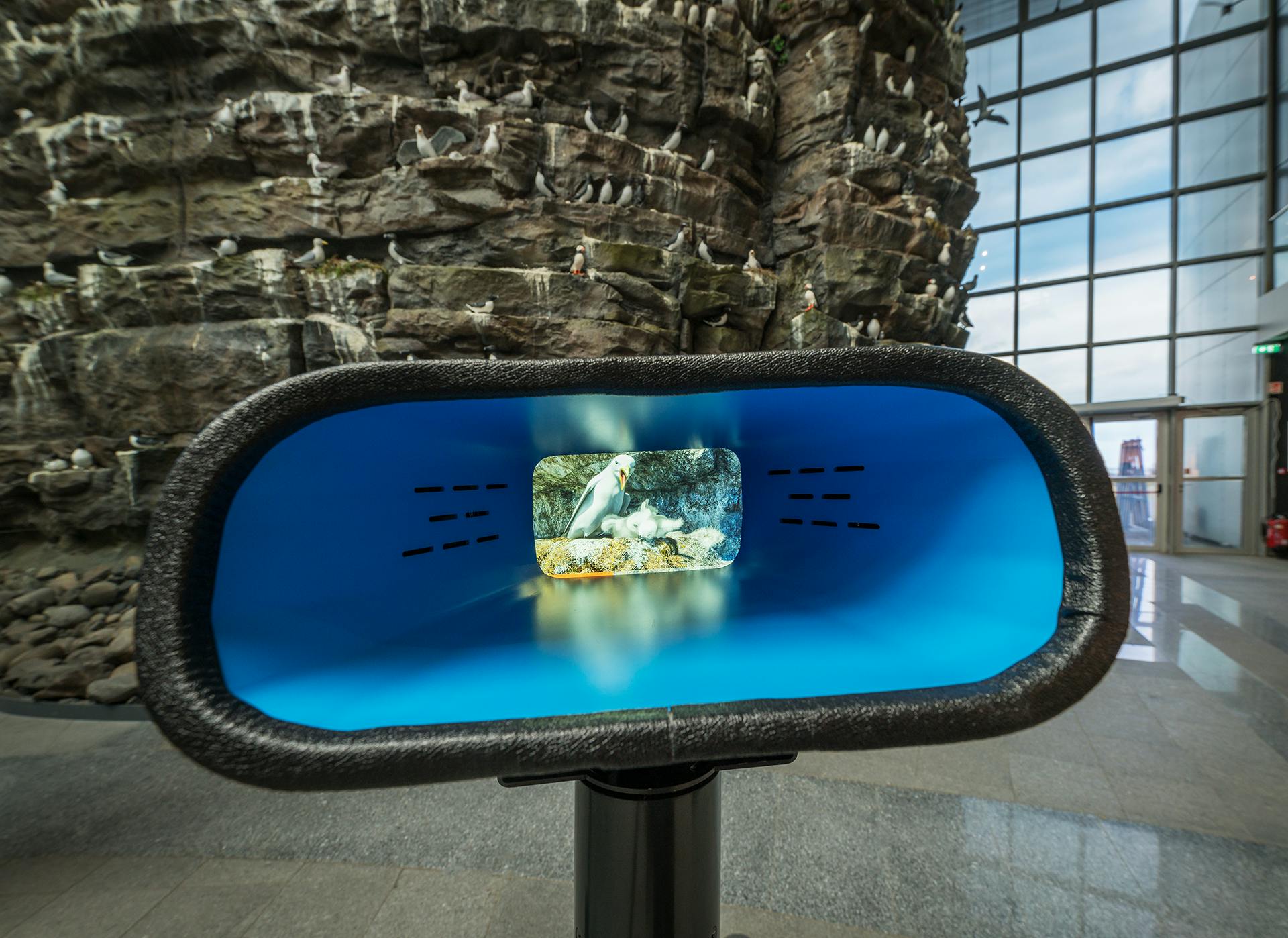
But the good news is that you don't have to travel to the Westfjords to see what Látrabjarg's like. The famous bird cliffs are replicated inside Perlan, one of Reykjavik's most famous structures, as part of a captivating display of the country's many incredible natural wonders.
Visiting Perlan provides an excellent opportunity for those with limited time in Iceland or who cannot travel to the Westfjords. The exhibition offers a unique perspective on the Látrabjarg Cliffs. It allows visitors to appreciate the beauty and significance of this remarkable site from the comfort of Reykjavik.
FAQ
How Is the Drive From Reykjavík to Látrabjarg Cliffs?
The drive from Reykjavík to Látrabjarg Cliffs covers a distance of approximately 460 kilometres (286 miles). It takes around 5.5 to 7 hours to reach the cliffs, depending on the route and driving conditions.
Do You Need a 4x4 Car To Get to Látrabjarg Cliffs?
Although a 4x4 vehicle is not necessary to reach the Látrabjarg Cliffs, it is recommended for added safety and comfort. A 4x4 vehicle can be useful if you plan on exploring other parts of the Westfjords, where more challenging road conditions may occur.
What Types of Birds Can Be Seen at Látrabjarg Cliffs?
Some of the most commonly spotted birds on the cliffs include puffins, razorbills, fulmars, guillemots, and gannets.







